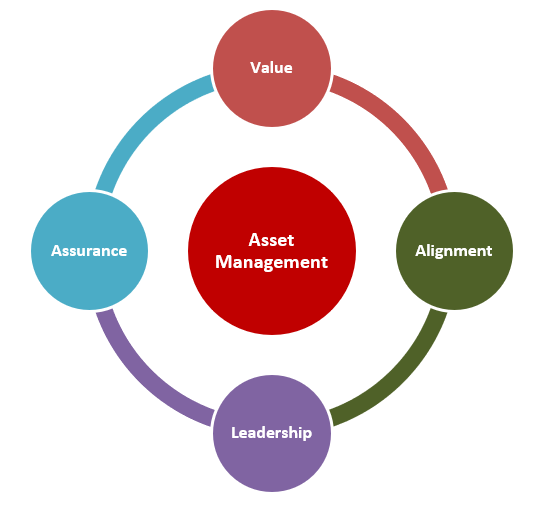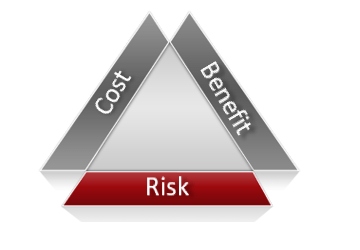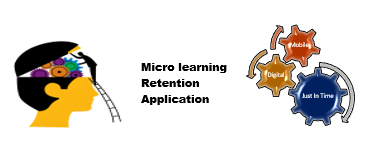We are observing a resurgence in interest from businesses wanting to build internal capability in asset management.
We are focusing our discussion on Asset Management Competency Frameworks as these are utilised to understand the needs for people in roles performing asset management functions. An organisations Asset Management Capabilities is defined by their ability to identify and embed a competency framework relevant to their Asset Management functions.
Larger, more complex organisations are investing in the development of competency frameworks and training programs aligned to their HR processes including performance evaluation and development planning, and often linked to productivity goals. Smaller businesses are seeking to leverage competency frameworks already in the public domain, and third-party training programs to ensure their people have the required skills and are doing the right Asset Management work.
None of this effort and focus is new. Effective competency frameworks have been recognised throughout the training world as forming the basis for linking competence with organisational strategy and capability since the early 1990s.
Global asset management organisations such as the Institute of Asset Management (IAM) and the Asset Management Council (AMC) have developed comprehensive competency frameworks aligned to the principles and scope of Asset Management Standards such as ISO 55001 since the early 2000s.
Within Defence, Government and the Resource Industries you will find various Asset Management competency frameworks to enable both individuals and teams recognise asset management capability requirements and competency gaps.
These competency frameworks all have much in common, including a focus on technical competence, maintenance strategies, tactics, maintenance, planning and work management but also on the holistic understanding of the relevance of managing assets to business requirements, risk and the necessity of influencing people and culture.
These frameworks also recognise that there are different levels of application required at various levels within the organisation, from the ability to participate in Asset Management functions through to the ability to work at a strategic level directing the work of others.
However, even with access to extensive research and resources available on the requirements of an effective asset management competence framework, businesses still seem to struggle embed and sustain required levels of capability.
In our view, the absence of an effective and sustainable program comes back to one of the following:
Mis-alignment of the AM competency framework with other functional competency frameworks.
Asset Management is not solely the domain of the engineering and maintenance departments, but requires the involvement of the leadership team, supply and procurement, operations, safety, risk, finance and HR. So, a key consideration is how best to build asset management competencies into the functional competency frameworks developed for these other disciplines. Alignment of asset management competencies within the broader roles-based competencies is essential to ensure asset management strategies are embedded and capability is sustained.

Support of senior leadership
While business leaders generally recognise the importance of investing in training and development, when times are tight and they are looking for ways to cut costs, training is very often seen as a something that can be sacrificed unless it is required for compliance reasons or Senior Leadership genuinely recognises the value of specific training programs. It is important to capture and communicate the value delivered through training in good times, and to be able to communicate the risks that arise when assets are not being managed effectively due to lack of knowledge and skills. The cost, benefit and risk triangle is a tool that can support the articulation of what Leadership is willing to trade-off when choosing to reduce costs.

Building training and development opportunities that enable the best learning and transfer of competence into workplace.
As technology advances, people look to these technologies to support learning. Today, tools such YouTube and social media are taking their place beside traditional eLearning approaches. Traditional classroom-based training is often now a last resort. Design and development of learning programs to improve the asset management capability must change to meet changing learning needs. Courses must be reviewed to determine if the method of delivery is supporting learners to retain and apply their learning. We also need to recognise that capability development is not just about training, it is about providing learning opportunities which may include involvement is special projects, secondments to other parts of the business, or simply on the job coaching.

Where to from here?
At Assetivity, we are focused on helping businesses to improve their asset management capabilities through development of asset management strategies, frameworks and plans; development and deployment of supporting business process documentation; and of course, development of asset management competence.
We recognise that there are a range of asset management competency frameworks out there, and they each have different characteristics that can be either useful or not applicable to your organisation. We can help you to select and tailor these frameworks to support your organisations needs.
We also deliver a range of public and bespoke training programs, ranging from a full suite of Asset Management courses aligned to ISO55001, to programs focussed on business processes, from planning and scheduling maintenance to spare parts optimisation. Where an ‘off the shelf’ course isn’t quite what you are looking for, we can provide an experienced Asset Management educator to support you to develop customised training material to suit your organisation’s needs.
You can find details on our suite of training programs here.
